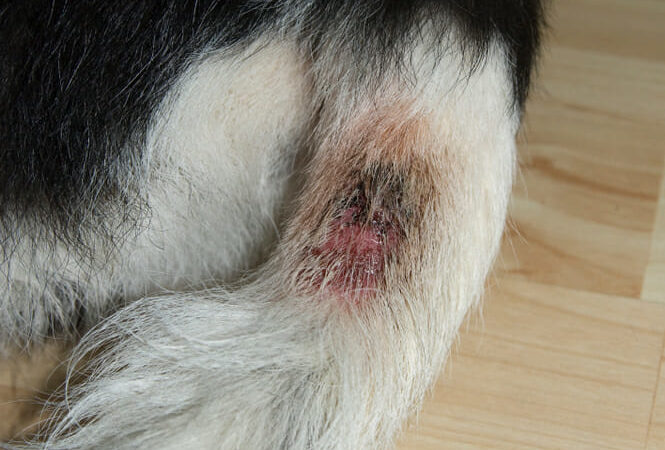Fleas and ticks are commonly found on dogs in this area. The simplest method to avoid these pests is to use a prevention program. Selection options are vast so discussing options and goals are vital to making an informed decision. There is so much fear regarding parasites it is also important to talk with our staff if your dog has been exposed.
How can I tell if my dog has fleas or ticks?
Fleas are very difficult to see directly. If your dog has fleas, the number one sign will be incessant scratching, especially around the ears, neck, and rump. Sometimes you may observe hair loss or scabs due to allergy flea dermatitis. You may see flea dirt (a polite term for flea feces) if you comb your dog over a paper towel, you will see black dots fall if you moisten the towel the specks will turn red. Ticks are a little more difficult, if they have not had a feeding they are rather tiny. If you pet your dog and feel a small lump you haven’t felt before it could be a tick. Sometimes they will look like, or remind you of, a skin tag. If you are walking your dog in the woods, tall grass areas, or tick-infested environments, make sure to give your dog a tick check, as well as yourself.
How can I prevent fleas and ticks on my dog?
You can prevent your dog from getting ticks and fleas by using either oral and/or topical medication available at our clinic. Examples include Revolution, Simparica, Bravecto, etc. There are so many options for flea/tick prevention that reviewing your dog’s individual risk and personal preferences with our veterinarian can be helpful in making a decision.
What are the treatment options for dogs who have ticks?
If your dog has a tick, it is important to remove all of the head and all eight legs. Our staff can review techniques and provide tick twisters to aid in removal. Once the tick is removed, your veterinarian can verify the type of tick which will also narrow down the type of the diseases that tick can potentially carry. The disease of greatest concern at this time is Lyme (borreliosis) but ticks can also carry anaplasmosis, ehrlichiosis, or rickettsia You can then discuss testing and monitoring steps required for your dog. This time is also important to review the need or type of preventative treatment.




